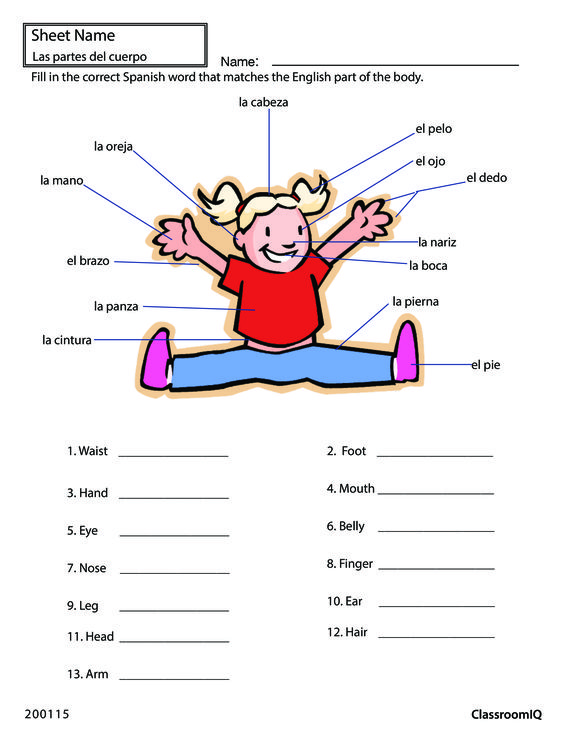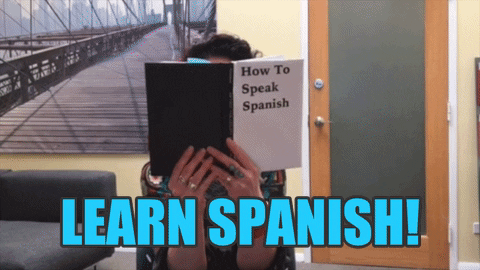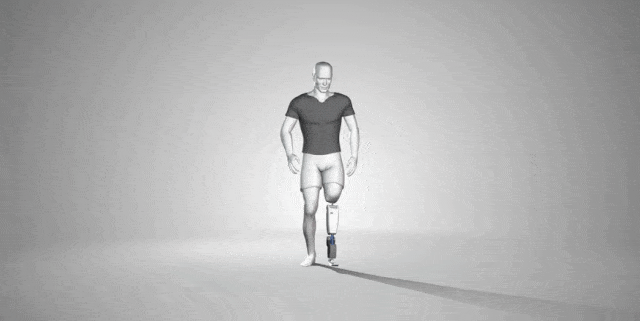Are you interested in learning Spanish and fascinated by the human body? If so, this article is perfect for you! We will guide you through the different parts of the human body in Spanish while providing actionable tips and compelling reasons to learn this beautiful language. So, let’s embark on this exciting journey together and explore the parts of the body in Spanish!
Introduction
2. La cabeza (The Head)
2.1 El pelo (The Hair)
2.2 Los ojos (The Eyes)
2.3 La nariz (The Nose)
2.4 La boca (The Mouth)
2.5 Las orejas (The Ears)
3. El tronco (The Trunk)
3.1 El cuello (The Neck)
3.2 Los hombros (The Shoulders)
3.3 El pecho (The Chest)
3.4 La espalda (The Back)
3.5 El abdomen (The Abdomen)
4. Las extremidades (The Limbs)
4.1 Los brazos (The Arms)
4.2 Las manos (The Hands)
4.3 Las piernas (The Legs)
4.4 Los pies (The Feet)
5. La piel (The Skin)
6. Tips for Learning Spanish
7. Common Misconceptions and Challenges
8. Reasons to Learn Spanish
9. BONUS TIPS
Ready? Let’s get started!
1. La cabeza (The Head)
1.1 El pelo (The Hair)
“El pelo” refers to the hair on your head. In Spanish, there are different words to describe hair color and texture. For example, “pelo rubio” means blonde hair, while “pelo rizado” refers to curly hair.
1.2 Los ojos (The Eyes)
“Los ojos” are the organs responsible for vision. Some common eye colors are “ojos azules” (blue eyes), “ojos verdes” (green eyes), and “ojos marrones” or “ojos cafés” (brown eyes).
1.3 La nariz (The Nose)
“La nariz” is the organ responsible for breathing and smelling. You can describe different nose shapes in Spanish, such as “nariz aguileña” (hooked nose) or “nariz respingona” (upturned nose).
1.4 La boca (The Mouth)
“La boca” consists of several parts, including “los labios” (the lips), “los dientes” (the teeth), “la lengua” (the tongue), and “el paladar” (the palate).
1.5 Las orejas (The Ears)
“Las orejas” are the organs responsible for hearing. In Spanish, you can describe ear shapes like “orejas de soplillo” (protruding ears) or “orejas pequeñas” (small ears).


2. El tronco (The Trunk)
2.1 El cuello (The Neck)
“El cuello” connects the head to the rest of the body. Some people might have a “cuello largo” (long neck) or a “cuello corto” (short neck).
2.2 Los hombros (The Shoulders)
“Los hombros” are the joints connecting the arms to the trunk. They play an essential role in upper body movement. In Spanish, you can describe broad shoulders as “hombros anchos” and narrow shoulders as “hombros estrechos.”
2.3 El pecho (The Chest)
“El pecho” refers to the upper front part of the trunk, containing the heart and lungs. In Spanish, you can use “pecho fuerte” to describe a well-developed chest or “pecho plano” for a flat chest.
2.4 La espalda (The Back)
“La espalda” is the rear part of the trunk, extending from the neck to the waist. You can describe a muscular back as “espalda musculosa” or a slim back as “espalda delgada.”
2.5 El abdomen (The Abdomen)
“El abdomen” is the front part of the trunk below the chest, containing the digestive organs. In Spanish, a toned abdomen is called “abdomen tonificado,” while a protruding one is referred to as “abdomen abultado.”


Do you need to learn Spanish? We can help you! We have a large range of Spanish courses for all ages, levels and industries.
3. Las extremidades (The Limbs)
3.1 Los brazos (The Arms)
“Los brazos” extend from the shoulders to the wrists. They comprise several parts, such as “el húmero” (the upper arm bone), “el codo” (the elbow), “el antebrazo” (the forearm), and “la muñeca” (the wrist).
3.2 Las manos (The Hands)
“Las manos” are the body’s primary tools for grasping and manipulating objects. They consist of “la palma” (the palm), “el dorso” (the back of the hand), and “los dedos” (the fingers), each with a name in Spanish: “el pulgar” (thumb), “el índice” (index finger), “el medio” or “el corazón” (middle finger), “el anular” (ring finger), and “el meñique” (little finger).
3.3 Las piernas (The Legs)
“Las piernas” support the body and facilitate movement. They include “el muslo” (the thigh), “la rodilla” (the knee), “la pantorrilla” or “la gema” (the calf), “la espinilla” (the shin), and “el tobillo” (the ankle).
3.4 Los pies (The Feet)
“Los pies” bear the body’s weight and enable walking and running. Key parts of the feet include “el talón” (the heel), “el arco” (the arch), “la planta” (the sole), and “los dedos del pie” (the toes), also known as “el dedo gordo” (big toe), “el segundo dedo” (second toe), “el tercer dedo” (third toe), “el cuarto dedo” (fourth toe), and “el dedo pequeño” or “el meñique” (little toe).
4. La piel (The Skin)
“La piel” is the body’s largest organ, covering and protecting it. In Spanish, you can describe skin types such as “piel seca” (dry skin), “piel grasa” (oily skin), “piel mixta” (combination skin), and “piel sensible” (sensitive skin). Additionally, you can refer to skin color with terms like “piel clara” (fair skin), “piel morena” (tanned or brown skin), “piel oscura” (dark skin), and “piel pálida” (pale skin).
5. Tips for Learning Spanish
To make your Spanish-learning journey enjoyable and effective, consider these tips:
- Practice daily: Consistency is key to mastering any language. Allocate time every day to practice vocabulary, grammar, and pronunciation.
- Make it fun: Engage with Spanish through movies, music, and conversations with native speakers.
- Use flashcards: Create flashcards to memorize new words and phrases, such as the parts of the body in Spanish.
- Join a language exchange: Participate in language exchange programs or find a conversation partner to practice speaking and gain confidence in your Spanish skills.
6. Common Misconceptions and Challenges
While it’s true that being in a Spanish-speaking country can expedite the learning process, you can still learn Spanish through online courses, language apps, and local language schools, even if you’re not in such an environment.
- You’re too old to learn a new language: Age is not a barrier to learning a new language. While it may take longer for adults to learn compared to children, with dedication and practice, anyone can learn Spanish at any age.
7. Reasons to Learn Spanish
Learning Spanish has numerous benefits, such as:
- Expanding your communication skills with over 460 million Spanish speakers worldwide
- Enhancing your travel experiences in Spanish-speaking countries
- Boosting your career opportunities in various fields
Bonus Tips:
Multilingual Guide to Human Body Parts: English, Spanish, Pronunciation
| English | Spanish | Pronunciation |
|---|---|---|
| Head | Cabeza | kah-BEH-sah |
| Hair | Pelo | PEH-loh |
| Forehead | Frente | FREHN-teh |
| Eye | Ojo | OH-hoh |
| Ear | Oreja | oh-REH-hah |
| Nose | Nariz | nah-REES |
| Mouth | Boca | BOH-kah |
| Lips | Labios | LAH-byohs |
| Teeth | Dientes | DYEN-tehs |
| Tongue | Lengua | LEHN-gwah |
| Throat | Garganta | gar-GAHN-tah |
| Neck | Cuello | KWEH-yoh |
| Shoulders | Hombros | OHM-brohs |
| Arm | Brazo | BRAH-soh |
| Elbow | Codo | KOH-doh |
| Wrist | Muñeca | moon-YEH-kah |
| Hand | Mano | MAH-noh |
| Fingers | Dedos | DEH-dohs |
| Thumb | Pulgar | pool-GAHR |
| Chest | Pecho | PEH-choh |
| Back | Espalda | ehs-PAHL-dah |
| Abdomen | Abdomen | ahd-doh-MEHN |
| Waist | Cintura | seen-TOO-rah |
| Hips | Caderas | kah-DEH-rahs |
| Leg | Pierna | PYEHR-nah |
| Thigh | Muslo | MOOS-loh |
| Knee | Rodilla | roh-DEE-yah |
| Calf | Pantorrilla | pahn-toh-REE-yah |
| Ankle | Tobillo | toh-BEE-yoh |
| Foot | Pie | pee-EH |
| Toes | Dedos del pie | DEH-dohs dehl pee-EH |
| Heel | Talón | tah-LOHN |
| Skin | Piel | pee-EHL |
Multilingual Body Parts Guide: English, Spanish, French, German, Dutch, and Chinese Translations
| English | Spanish | French | German | Dutch | Chinese |
|---|---|---|---|---|---|
| Head | Cabeza | Tête | Kopf | Hoofd | 头 (Tóu) |
| Hair | Pelo | Cheveux | Haar | Haar | 头发 (Tóufǎ) |
| Eye | Ojo | Œil | Auge | Oog | 眼睛 (Yǎnjīng) |
| Ear | Oreja | Oreille | Ohr | Oor | 耳朵 (Ěrduo) |
| Nose | Nariz | Nez | Nase | Neus | 鼻子 (Bízi) |
| Mouth | Boca | Bouche | Mund | Mond | 嘴巴 (Zuǐba) |
| Neck | Cuello | Cou | Hals | Nek | 颈部 (Jǐngbù) |
| Shoulder | Hombro | Épaule | Schulter | Schouder | 肩膀 (Jiānbǎng) |
| Arm | Brazo | Bras | Arm | Arm | 胳膊 (Gēbó) |
| Hand | Mano | Main | Hand | Hand | 手 (Shǒu) |
| Finger | Dedo | Doigt | Finger | Vinger | 手指 (Shǒuzhǐ) |
| Leg | Pierna | Jambe | Bein | Been | 腿 (Tuǐ) |
| Knee | Rodilla | Genou | Knie | Knie | 膝盖 (Xīgài) |
| Foot | Pie | Pied | Fuß | Voet | 脚 (Jiǎo) |
| Toe | Dedo del pie | Orteil | Zeh | Teen | 脚趾 (Jiǎozhǐ) |
Exploring the human body in Spanish is a fun and engaging way to learn the language. By understanding the various body parts and their descriptions, you can expand your vocabulary and improve your conversational skills. Remember, practice makes perfect, so use the tips provided in this article to enhance your learning experience and overcome any challenges you may encounter. Embrace the fascinating world of the Spanish language and the human body, and start discovering the endless possibilities today!




